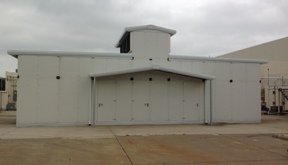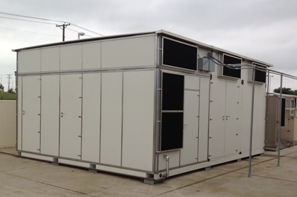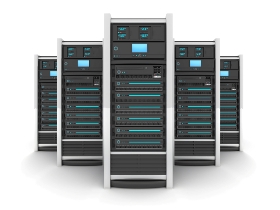 Whether it’s an enterprise or multi-tenant (co-location) facility, the data center is fast becoming an organization’s most valuable strategic asset. Its ability to handle immense volumes of data, provide highly reliable IT services for users and quickly adapt to the increasing demands of a dynamic environment can make or break a business. As a result, IT and facilities professionals are constantly looking to make their data centers more agile and efficient.
Whether it’s an enterprise or multi-tenant (co-location) facility, the data center is fast becoming an organization’s most valuable strategic asset. Its ability to handle immense volumes of data, provide highly reliable IT services for users and quickly adapt to the increasing demands of a dynamic environment can make or break a business. As a result, IT and facilities professionals are constantly looking to make their data centers more agile and efficient.
A typical data center is a traditional brick-and-mortar facility that can range from a few thousand to a million square feet or more. A data center of this type is often pre-designed to house all of the necessary racks, power distribution, cooling, cabling, fire suppression, and physical security systems needed to support IT services over the next 10 to 15 years. These facilities can come with a hefty price tag in the hundreds of millions of dollars and take two to three years to plan, design and build.
So, what’s the problem? As IT technologies rapidly evolve and virtualization and cloud computing complicates traditional capacity planning, a brick-and-mortar data center designed today could conceivably become obsolete before it is ever deployed. Its power, cooling and IT “white space” requirements might have been specified by the business at a certain point in time, but by the time the facility actually goes live, the needs of the business—and the data center technologies available to support the business—may have irrevocably changed. This constant demand for change results in stranded or inadequate space, power, or cooling, and leaves traditional data center owners trapped in a perpetual and expensive retrofit cycle while attempting to save their initial capital investment.
As a result, many data center owners and operators are exploring alternatives to traditional data center design-and-build.
 Within the last several years, the market has warmed to the concept of the prefabricated modular data center. A modular data center is a concept that uses prefabricated modules—built and tested at a factory, disassembled, shipped to a site and then reassembled to deliver data center white space, power and cooling infrastructure. A modular data center can be set up and operational within 14 to 20 weeks instead of two to three years. Also, as business capacity needs or technologies change, new modules addressing the change can be quickly and cost-efficiently added or existing solutions pre-engineered for upgrading can be seamlessly modified.
Within the last several years, the market has warmed to the concept of the prefabricated modular data center. A modular data center is a concept that uses prefabricated modules—built and tested at a factory, disassembled, shipped to a site and then reassembled to deliver data center white space, power and cooling infrastructure. A modular data center can be set up and operational within 14 to 20 weeks instead of two to three years. Also, as business capacity needs or technologies change, new modules addressing the change can be quickly and cost-efficiently added or existing solutions pre-engineered for upgrading can be seamlessly modified.
This approach enables businesses to focus on meeting their current and very near term data center capacity needs, rather than attempting to project and build for their anticipated long-term demand. It creates a purpose-built data center infrastructure that’s built to fit from the start.
The benefits of a prefabricated modular data center include:
- Significant capital expenditure savings in design, planning, construction and infrastructure
- Lower power, cooling, and operational expenses due to infrastructure right sizing, engineering out complexity and the usage of hyper-efficient innovative cooling designs
- The ability to future-proof the data center by easily upgrading whenever more capacity is needed
These benefits are why the prefabricated modular data center is an extremely agile and cost-efficient option for data center owners and operators looking beyond traditional approaches to address rapid changes in business and technology needs today and tomorrow.

 The modern data center is a complex place. The proliferation of mobile devices, like tablets and smartphones, place an ever-increasing pressure on the IT departments and data centers. End-user and customers’ expectation levels have never been higher and the demand for data shows no sign of slowing down. Data center managers must manage all of these elements while also remaining efficient and keeping costs under control. So where does the data center go from here?
The modern data center is a complex place. The proliferation of mobile devices, like tablets and smartphones, place an ever-increasing pressure on the IT departments and data centers. End-user and customers’ expectation levels have never been higher and the demand for data shows no sign of slowing down. Data center managers must manage all of these elements while also remaining efficient and keeping costs under control. So where does the data center go from here?